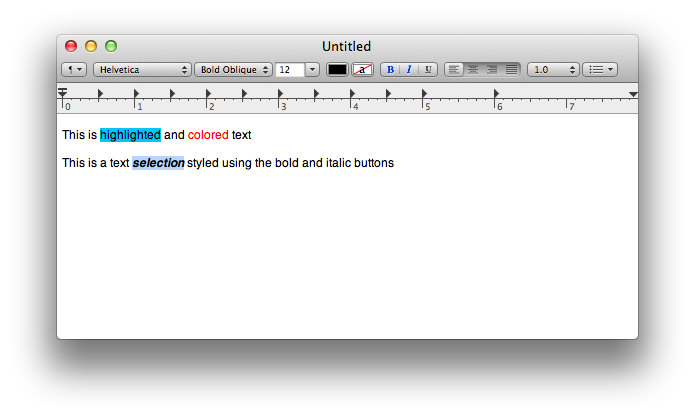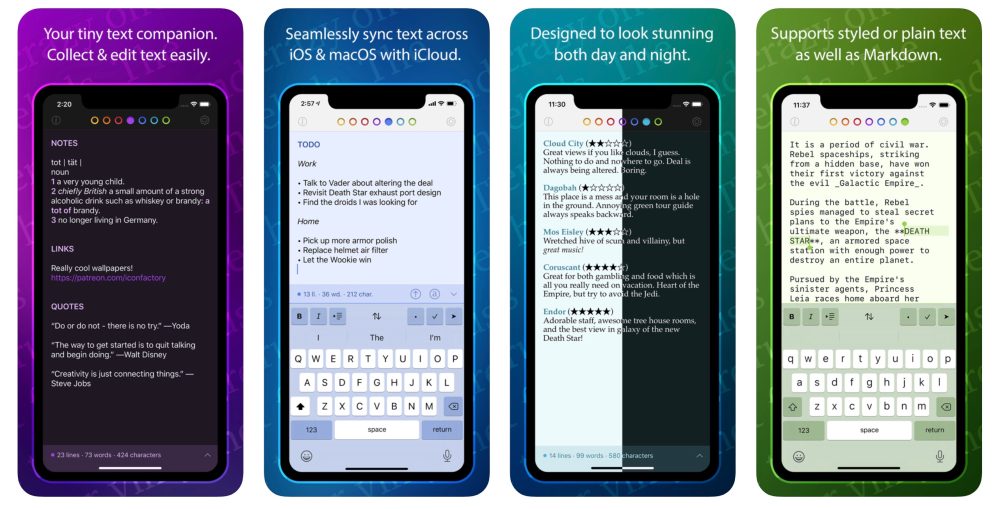By default, there are two problems when you try to open html files on a Mac:1. When you double click it opens in Safari = annoying!2. Even if you right clic. This is how you can use textedit in Mac to edit html files.https://a1websitepro.com/absolute-beginners-course-in-web-development/.
TextEdit User Guide

TextEdit can open documents in Microsoft Word, OpenDocument, Web Archive, HTML, rich text, and plain text formats. You can also change the formatting of HTML and RTF files when you open them.
Open a document
In the TextEdit app on your Mac, choose File > Open.
Select the document, then click Open.
If your document is stored in iCloud Drive, you can select TextEdit in the iCloud section of the sidebar, then double-click your document. See Use iCloud Drive to store documents.
To see the default formatting of an HTML or RTF file, choose TextEdit > Preferences, then click Open and Save. For information about viewing RTF formatting, see View the RTF directives in RTF files.
Textedit On Macbook Air
When you use Dark Mode, you can display documents in TextEdit with a light or dark background. In TextEdit, choose View > Use Dark Background for Windows (a checkmark indicates the dark background is being used); to turn it off, choose the command again (the checkmark is removed). When you view documents in TextEdit using the dark background, some text and background colors may be displayed differently on the screen to ensure the contents of the document are legible.
Change the document format
You can change the format of your document. Plain text (.txt) doesn’t allow formatting. Rich text (.rtf) allows formatting, tables, and images. When you change a rich text document to plain text, the document loses all text styles and formatting options.
In the TextEdit app on your Mac, choose Format > Make Plain Text or Format > Make Rich Text.
If there’s a format you prefer for new documents, you can set the default format. Choose TextEdit > Preferences, click New Document, then select “Rich text” or “Plain text” below Format.
TextEdit is a free word processor that has long been included as part of Macintosh operating systems (it was originally created for the NeXTSTEP operating system and came to Apple as part of the company’s acquisition of NeXT and its software, which would soon become the foundation of OS X). Despite its relatively basic interface, TextEdit has grown into a powerful application that can easily handle most simple word processing requirements. TextEdit is able to offer these capabilities thanks to robust support for rich text formatting, which allows users to change fonts, sizes, colors, and more — in essence, the bulk of what most consumers think of when they picture more advanced word processing applications such as Apple Pages and Microsoft Word.
TextEdit offers powerful rich text formatting options
But sometimes it’s best to use TextEdit Plain Text Mode, which eliminates all formatting and, you guessed it, produces only plain text. This can be useful for removing the formatting from copied text, working with code, or reducing the complexity and file sizes of documents that don’t need the benefits of rich text formatting.
Convert Rich Text to Plain Text in TextEdit
TextEdit opens a new document in rich text mode by default, but you can easily convert a document to plain text at any time. To do so, make sure the document you wish to convert is open and selected, then go to Format > Make Plain Text in the TextEdit menu bar. Alternatively, you can use the keyboard shortcut Shift-Command-T.
You’ll get a confirmation box warning you that making a document plain text will remove all formatting; make sure you heed it carefully. If you select OK, everything except for your document’s text will be removed. This includes custom fonts, font sizes and styles, colors, bold, italicized, and underlined formatting, embedded images, and hyperlinks. The result will be clean, simple, plain text.
Converting a document to plain text removes all formatting
You can always convert a TextEdit plain text document back to a rich text document, but that only applies to new formatting; you won’t get your original formatting back. So, with this in mind, make sure you
 really
really want to convert from rich text to plain text, and make a backup copy of the document if you’re not completely sure.
want to convert from rich text to plain text, and make a backup copy of the document if you’re not completely sure.Use Plain Text by Default in TextEdit
Where Is Textedit On My Macbook Air

How To Open Textedit On Macbook Air
If you’re a budding programmer or blogger and you want a plain text environment to write code or HTML, you’ll likely want to use TextEdit plain text mode almost exclusively. Instead of switching each new document to plain text mode manually using the steps above, why not set TextEdit to open in plain text mode by default?
To use plain text by default in TextEdit, go to TextEdit > Preferences in the menu bar. On the New Document tab, select Plain Text in the Format section. You don’t even need to close the preference window to initiate the change. As soon as you click the Plain Text button, all new TextEdit windows will open in Plain Text Mode.
Alternatively, of course, you can go back to this preference window and select Rich Text instead if you ever want to switch back to rich text by default. Of note, you can also use this preference window to set other useful default options, such as enabling or disabling text wrap, the default font for both plain and rich text documents, and the default size of new TextEdit windows.
If you ever make too many changes and want to revert to the original configuration settings, just click Restore All Defaults at the bottom of the preferences window.
There are many powerful third party apps dedicated to plain text and coding on the Mac — options like BBEdit, TextWrangler, TextMate, Sublime Text, and Coda come to mind — but TextEdit is free, always available, and quite capable of handling all the basics. By properly navigating the appropriate uses for rich and plain text, TextEdit should be your first stop for plain text editing in OS X.